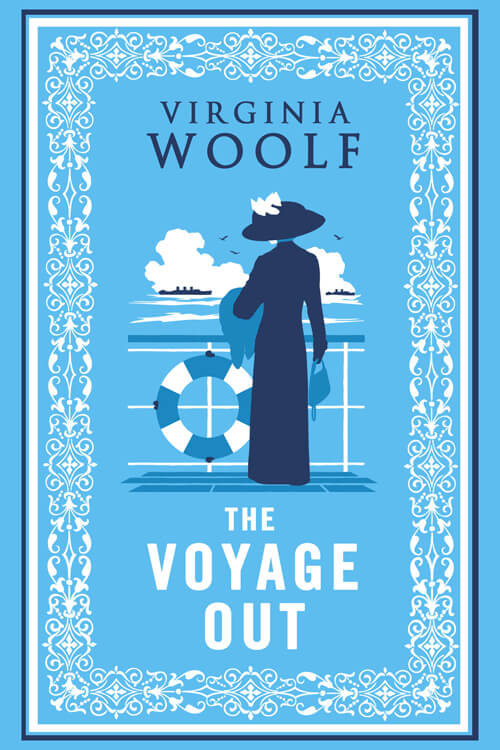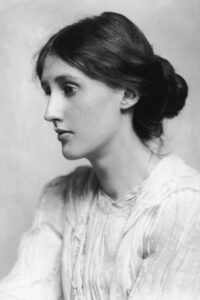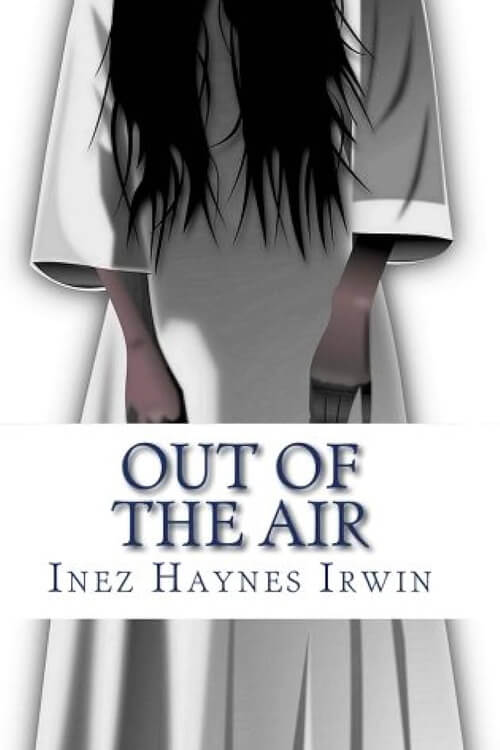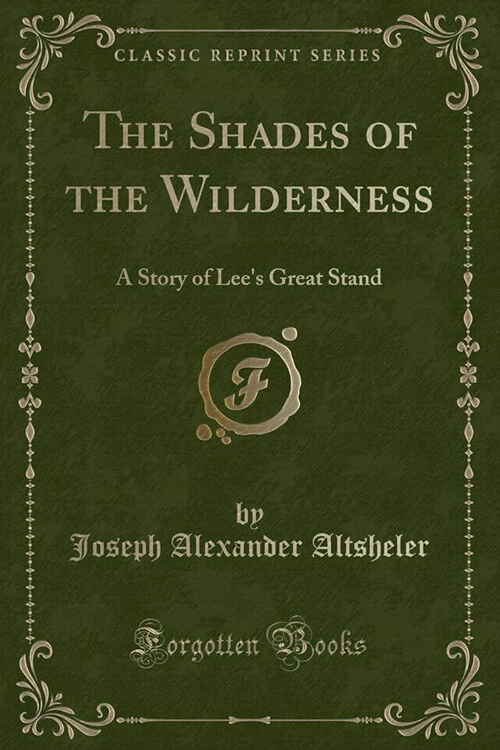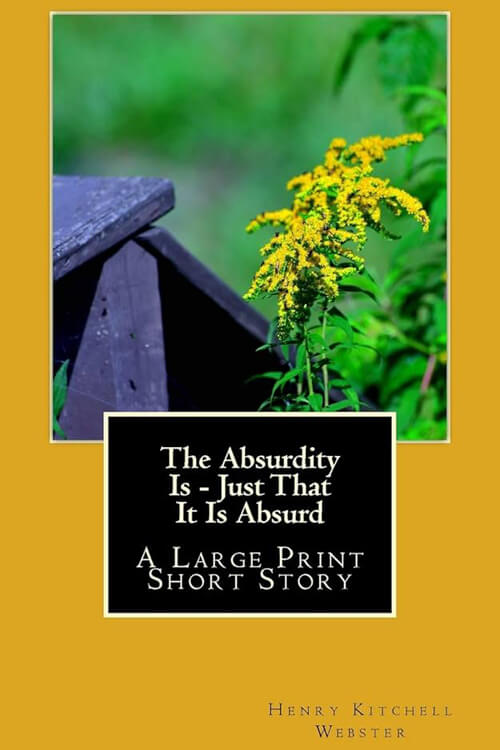
The Voyage Out
As the streets that lead from the Strand to the Embankment are very narrow, it is better not to walk down them arm-in-arm. If you persist, lawyers’ clerks will have to make flying leaps into the mud; young lady typists will have to fidget behind you. In the streets of London where beauty goes unregarded, eccentricity must pay the penalty, and it is better not to be very tall, to wear a long blue cloak, or to beat the air with your left hand.
One afternoon in the beginning of October when the traffic was becoming brisk a tall man strode along the edge of the pavement with a lady on his arm. Angry glances struck upon their backs. The small, agitated figures—for in comparison with this couple most people looked small—decorated with fountain pens, burdened with despatch boxes, had appointments to keep, and drew a weekly salary so that there was some reason for the unfriendly stare which was bestowed upon Mr. Ambrose’s height and Mrs. Ambrose’s cloak. But some enchantment had put both man and woman beyond the reach of malice and unpopularity. In his guess one might guess from the moving lips that it was thought; and in hers from the eyes fixed stonily straight in front of her at a level above the eyes of most that it was sorrow. It was only by scorning all she met that she kept herself from tears, and the friction of people brushing past her was painful. After watching the traffic on the Embankment for a minute or two with a stoical gaze she twitched her husband’s sleeve, and they crossed between the swift discharge of motor cars. When they were safe on the further side, she gently withdrew her arm from his, allowing her mouth at the same time to relax, to tremble; then tears rolled down, and leaning her elbows on the balustrade, she shielded her face from the curious. Mr. Ambrose attempted consolation; he patted her shoulder; but she showed no signs of admitting him, and feeling it awkward to stand beside a grief that was greater than his, he crossed his arms behind him, and took a turn along the pavement.
The embankment juts out in angles here and there, like pulpits; instead of preachers, however, small boys occupy them, dangling string, dropping pebbles, or launching wads of paper for a cruise. With their sharp eye for eccentricity, they were inclined to think Mr. Ambrose awful; but the quickest-witted cried “Bluebeard!” as he passed. In case they should proceed to tease his wife, Mr. Ambrose flourished his stick at them, upon which they decided that he was grotesque merely, and four instead of one cried “Bluebeard!” in chorus.
Read or download Book
Virginia Woolf
Adeline Virginia Woolf (25 January 1882 – 28 March 1941) was an English writer. She is considered one of the most important modernist 20th-century authors and a pioneer in the use of stream of consciousness as a narrative device.
Woolf was born into an affluent household in South Kensington, London, the seventh child of Julia Prinsep Jackson and Leslie Stephen in a blended family of eight that included the modernist painter Vanessa Bell. She was home-schooled in English classics and Victorian literature from a young age. From 1897 to 1901, she attended the Ladies’ Department of King’s College London, where she studied classics and history and came into contact with early reformers of women’s higher education and the women’s rights movement.
After her father died in 1904, the Stephen family moved from Kensington to the more bohemian Bloomsbury, where, in conjunction with the brothers’ intellectual friends, they formed the artistic and literary Bloomsbury Group. In 1912, she married Leonard Woolf, and in 1917, the couple founded the Hogarth Press, which published much of her work. They rented a home in Sussex and later moved there permanently in 1940.
Woolf began writing professionally in 1900. During the inter-war period, Woolf was an important part of London’s literary and artistic society. In 1915, she published her first novel, The Voyage Out, through her half-brother’s publishing house, Gerald Duckworth and Company. Her best-known works include the novels Mrs Dalloway (1925), To the Lighthouse (1927) and Orlando (1928). She is also known for her essays, such as A Room of One’s Own (1929).
Woolf became one of the central subjects of the 1970s movement of feminist criticism. Her works, translated into more than 50 languages, have attracted attention and widespread commentary for inspiring feminism. A large body of writing is dedicated to her life and work. She has been the subject of plays, novels, and films. Woolf is commemorated by statues, societies dedicated to her work, and a building at the University of London.
Work
Woolf is considered to be one of the more important 20th-century novelists. A modernist, she was one of the pioneers of using the stream of consciousness as a narrative device, alongside contemporaries such as Marcel Proust, Dorothy Richardson, and James Joyce. Woolf’s reputation was at its greatest during the 1930s but declined considerably following the Second World War. The growth of feminist criticism in the 1970s helped re-establish her reputation.
Virginia submitted her first article in 1890, to a competition in Tit-Bits. Although it was rejected, this shipboard romance by the 8-year-old would presage her first novel 25 years later, as would contributions to the Hyde Park News, such as the model letter “to show young people the right way to express what is in their hearts”, a subtle commentary on her mother’s legendary matchmaking. She transitioned from juvenilia to professional journalism in 1904 at the age of 22. Violet Dickinson introduced her to Kathleen Lyttelton, the editor of the Women’s Supplement of The Guardian, a Church of England newspaper. Invited to submit a 1,500-word article, Virginia sent Lyttelton a review of William Dean Howells’ The Son of Royal Langbirth and an essay about her visit to Haworth that year, Haworth, November 1904. The review was published anonymously on 4 December, and the essay on the 21st. In 1905, Woolf began writing for The Times Literary Supplement.
Woolf would go on to publish novels and essays as a public intellectual to both critical and popular acclaim. Much of her work was self-published through the Hogarth Press. “Virginia Woolf’s peculiarities as a fiction writer have tended to obscure her central strength: she is arguably the major lyrical novelist in the English language. Her novels are highly experimental: a narrative, frequently uneventful and commonplace, is refracted—and sometimes almost dissolved—in the characters’ receptive consciousness. Intense lyricism and stylistic virtuosity fuse to create a world overabundant with auditory and visual impressions.” “The intensity of Virginia Woolf’s poetic vision elevates the ordinary, sometimes banal settings”—often wartime environments—” of most of her novels.”

